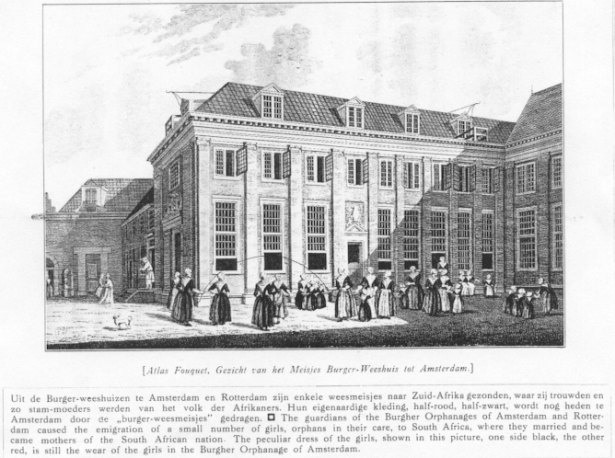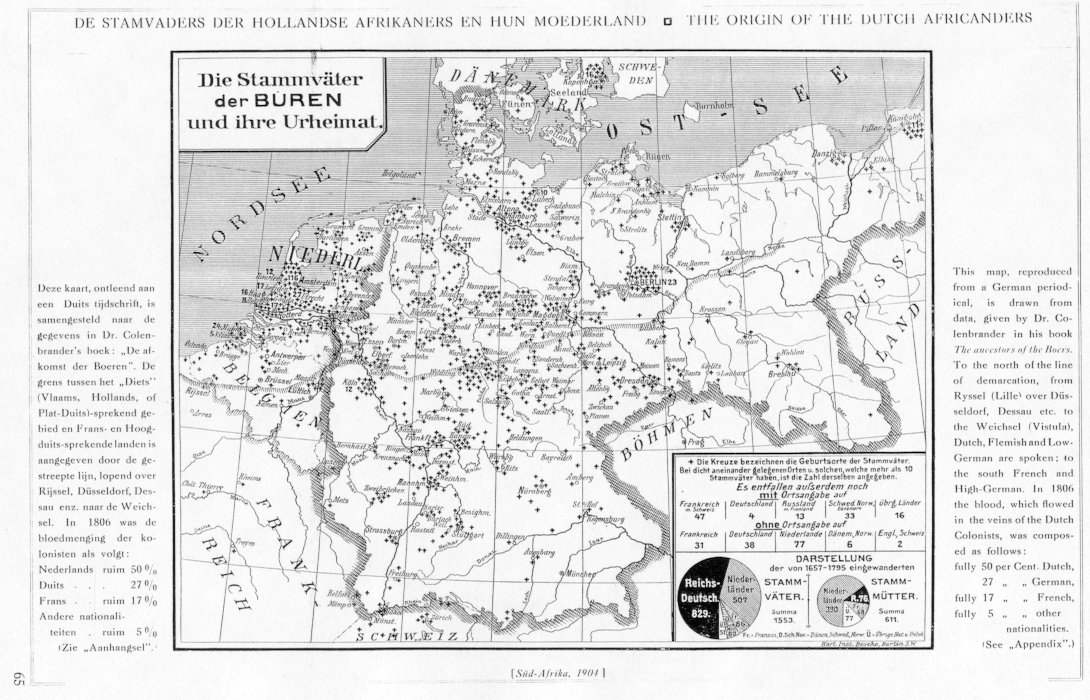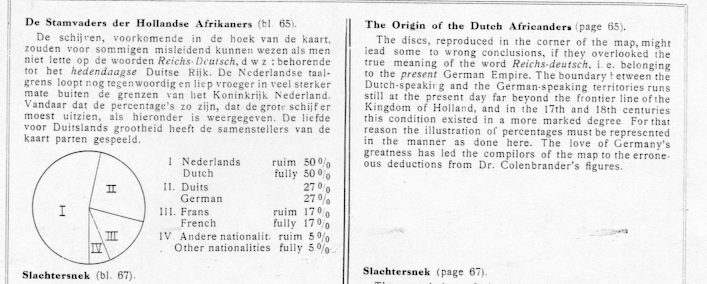Insights into the VOC Stamouers
Included are a number of description of the kind of people who served the VOC and went to the East, the accounts vary from Leibbrandt's saintly portrayal to Pieter de la Court total contempt of VOC servants. A large number of South African stamouers were for a time servants of the VOC. This gives us some insights into what kind of persons they may have been:
A. According to H.C.V. Leibbrandt:
In going through the list, one often recurring word will, no doubt, cause some surprise. It is that of "soldier," the rank which many memorialists held when they entered the Service ; and the impression may thus easily be caused that most of the earlier, as well as of the later Colonists, were of humble origin, and not of the best class of Europeans. No greater fallacy is possible, and an explanation is therefore necessary. As the Dutch East India Company always required large numbers of new men and boys to fill the ranks in the different branches of its Service, volunteers from all parts of the Continent naturally flocked to Amsterdam with the intention of going to the East Indies to try their fortunes there. Men of every profession and trade offered themselves, and, before their acceptance, were carefully examined and classified. But whether they were Doctors, Lawyers, Surveyors etc, every one was entered on the books of the Civil Service as a "soldier," with the pay of nine guilders per month. This was the lowest rank with which all had to commence their careers, and therefore it was very natural, and no anomaly, when e.g., a surgeon died, that he was succeeded nominally by a "soldier", but really by another qualified surgeon, still holding the rank of "soldier". …. In the Civil Service the ranks appear to have been as follows:- (1) Soldier; (2) Assistant; (3) Bookkeeper; (4) Junior Merchant; and (5) Senior Merchant, with perhaps the additional title of Extraordinary or Ordinary Councilor of India. And hence it becomes perfectly clear that a person described as a "Soldier" was, as a rule, no more a "Soldier" than a "Junior" or "Senior Merchant" was a "Merchant".
H.C.V. Leibbrandt, Keeper of the Archives, Precis of the Archives of the Cape of Good Hope 1715-1806 (Requesten or Memorials), vol 1, A-E , Cape Times Limited, Government Printers 1905.
B. The following interesting account is given concerning the kind of burghers which settled in Banda Indonesia by WA Hanna:
On the island of Banda, Indonesia was a VOC base, here the vrijburghers were called "perkeniers", they are described as - "Rude one-time servants of the VOC ... mostly were misfits, rakes or scoundrels, nobody's first choice as model colonials" p 39.
Few Dutch woman migrated, most who came were the so called "company daughters" - orphans, paupers, and prostitutes which the VOC shipped out, "they were more sluttish than the most uncouth slave." p 96
In Banda the burghers were prohibited to marry local women, having a sexual relation with them was considered fornication for which they would receive a whipping. "They therefore resorted to the subterfuge of purchasing, baptising and adopting attractive young slave girls, who, having been some what Christianised and domesticated, might win the governor's approbation for a wedding." p 96.
WA Hanna: Banda A Journey through Indonesia's Fabled Isles of Fire and Spice. 
C. When High Commissioner Hendrik Adriaan van Reede tot Drakenstein came to the Cape in 1685, the fiscal told him that the Free Burghers came from lower class families in Europe and, when they suddenly found themselves in a position of authority, they abused this power by asking the fiscal to go give their slaves a severe canning.
(Refer to A Hulshof: H.A. van Reede tot Drakenstein, Journaal van zijn verblijf aan de Kaap p 97)
D. Bruijns in Dutch Asiatic Shipping gives the following statistic p 143, The VOC fitted out 4,700 ships, sending 1 million people to Asia and only about one third ever returned to Europe.
p 151 Quoting Warnsinck: Reizen van Nicolaas de Graaf, Oost-Indise Spiegel p44 "With some exaggeration the Company was said to be in contemporary opinion 'a great refuge for all spoilt brats, bankrupts, failed students, cashiers, brokers, tenants, bailiffs, informers and such like rakes'"
The Company was content with inexperienced and the beggarly unemployed.
Research into the Cape stamouers should include the reasons and circumstances why a specific stamouer joined the VOC and came to the Cape. In this book is listed the following categories of migrants:
1. There were the economic Migrants - Many Germans came for this reason, due to unemployment (Hannekemaaiers - mowers or haymaking or harvesting.)
2. There were the expulsion of emigrants from other countries for political and religious reasons -
a) Germans came and sought refuge in the Netherlands during and after the Thirty Year War (1618-1648)
b) Jews were fleeing the pogrom in Poland
c) French Huguenots fled after the repeal of in 1685 of Edict of Nantes
E. Jde Hullu Op de schepen der Oost-indische Compagnie. p 59 "Bijna altoos was de bemanning voor een deel, en dikwijls een aanzienlijk deel, samengesteld uit vreemdelingen." p 62 " Wat naar Indië gaat, alzo was klaarblijkelijk de ganse 17de eeuw door de publieke opinie, is niet anders dan slecht volk, dat nergens toe deugt of door wangedrag zijn fortuin heeft zoek gemaakt. .... Johannes Thedens, een geboren Duitser, die zijn loopbaan als soldaat begon en als Goeverneur-Generaal eindigde".

F. CR Boxer Jan Companjie in War and Peace p 5 "It is undeniable that many unscrupulous individuals enlisted in the service of the VOC ... with the sole object of enriching themselves as quickly as possible, irrespective of the means. Others hoped to live a life of luxury in the East, which they could never afford to do at home. Others enlisted because through no fault of their own, they had no options but to emigrate. Others, such as bankrupts, might hope to recoup their losses and even to repay their creditors. Still others left their country for their country's good, or simply because their friends and families wanted to be rid of them." He also quotes Pieter de la Court who complains against the restrictions of the VOC p6 "so that it is no wonder that so few admirable, and that so many ignorant, lazy, prodigal and vicious men sail to the Indies in the service of the companies. But it is twice as astonishing that we find any intelligent, thrifty, industrious, and virtuous men, especially Hollanders, who are prepared to enlist in such a slavish service unless in the greatest need." Boxer continues "The servants of the VOC were not recruited almost exclusively from 'the dregs of the Dutch and many other nations", as the scandalized de la Court complained. That a fair number of respectable men from respectable families, as wells as many wastrels and misfits, were to be found in the service of the VOC, is clear from the biographical details copiously supplied in works such as Wijnandts van Resandt's study of the chiefs of the outlying agencies in Asia, from Dr Philip W. Coolhaas truly monumental edition of the correspondence of the Governors-General and their councils at Batavia with the Heren XVII (1610-1713), and from ongoing work by Frank Lequin on the socio-economic history of the VOC employees of all ranks in Bengal.
G. J de Hullu Op de schepen der Oost-indische Compagnie p139, Hy het 'n steekproef geneem en bepaal dat van die VOC seelieden 60.2% was van Nederland, en 39.8% was buitelanders.
p140 Hy het ook 'n steekproef van soldaten in die VOC geneem en het bepaal dat 33.2% was Nederlanders en 66.8% was buitelanders
H. GC de Wet gee die volgende statistieke oor watse beroepe die vryburgers tevore in die VOC verrig het. 'n Mens wonder met die inligting wat de Wet verskaf of wat Leibbrandt gesê het waar kan wees, wanneer al die ander poste van melding gemaak was:
HOëR AMPTENARE
Goewerneur ------------- 1
Onderkoopman ---------- 1
Boekhouer -------------- 1
Assistent --------------- 4
Adelborst -------------- 33
Chirurgyn --------------- 3
Krankbesoeker ---------- 2
TOTAAL --------------- 45
DIENAARS
Landmeter -------------- 1
Kuiper ------------------ 1
Saalmaker -------------- 1
Wamaker --------------- 2
Klipkapper -------------- 1
Messelaar -------------- 3
Houtkapper ------------- 1
Timmerman ------------- 1
Tuinier ----------------- 3
Stalmeester ------------ 1
Wadrywer -------------- 2
Kok -------------------- 1
Koksmaat -------------- 1
Slagter ---------------- 2
TOTAAL -------------- 21
BEROEPSOLDATE
Luitenant ------------- 1
Vaandrig -------------- 2
Sersant --------------- 3
Korporaal ------------- 6
Landspassaat --------- 1
Soldaat ------------ 223
Bosschieter ---------- 33
Konstabel ------------- 1
Konstabelsmaat ------- 1
Trompetter ----------- 1
Geweldiger ------------ 1
TOTAAL ------------ 273
SEELUI
Ekwipasiemeester ---- 1
Skeepstimmerman ---- 3
Seilmaker ------------ 2
Skeepskorporaal ------ 2
Schieman ------------ 1
Bootsman ----------- 20
Matroos ------------ 74
Skeepsjonge --------- 7
Hooploper ------------ 6
TOTAAL ----------- 116
Hierdie inligting dek die periode 1657 - 1705. Uit die inligting wat hy kon insamel was daar 528 vryburger en hy kon net die rang van 455 bepaal, daar was 73 persone wie se rang onbekend was. Let wel, die inligting sluit nie die statistieke vir immigrante soos die Hugenote in nie. Uitreksel van GC de Wet Die Vryliede en Vryswartes in die Kaapse Nedersetting 1657-1707, p 24
I. "The VOC had something of the character of the French Foreign Legion and attracted Europeans from other countries to its service" Michael Roberts, Ismeth Raheen and Percy Colin-Thome: People inbetween: The Burghers and the Middle Class in the Transformation within Sri Lanka, p 39.
J. "Bovendien kan worden vastgesteld, dat die recruteringsgebieden .... Bij zeelieden kwam het merendeel nog wel uit kusstreken, zoals uit de aan die Noordzee en Oostzee gelegen Duitse staten en uit Scandinavie, maar bij de soldaten kwm de meerderheid uit ver van zee gelegen gebieden als de Pats en Hessen." Femme S Gaastra, De Geschiedenis van de VOC p 81.
K. Daar is 'n intersante navorsing oor die tipe persoon wat na die Kaap toe gekom het. Was hulle lae klas mense, kon hulle gelees het en geskrywe het? Ad Biewenga het navorsing gedoen en statistieke vir handtekeninge ingewin. Hy het die Stellenbosche distrik vir die jaar 1704 nagevors. 49% van die manlike en 42% van die vroulike burghers kon lees of skrywe. Hy vergelyk die data dan met data vir Holland gedurende die selfde tydperk. Vir sy artikel gaan kyk na http://www.savn.org.za/images/stories/documents/TNA/TNA%2019962.pdf
Soekenjin vir voc seeliede wat op skepe uitgevaar het:
VOC Opvarend
Social Life on the VOC ships.
Social Life on VOC ships
- Hits: 20029
